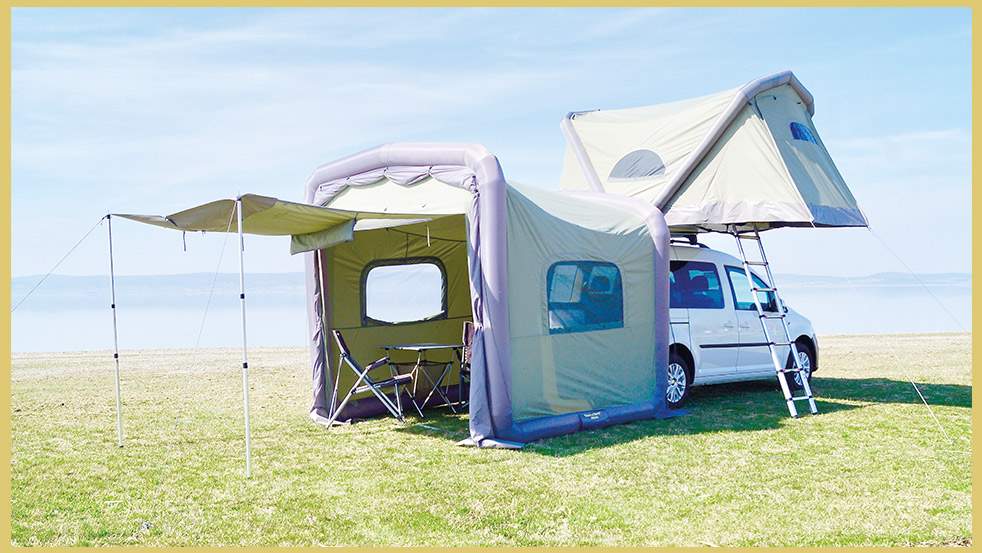
Proper awning care includes cleaning, impregnation and correct storage. After all, those who care for their awning can significantly increase the service life of their awning. How to care for your awning after a trip to avoid mildew stains or mould infestation are the most important steps and care instructions.
1. Drying
The most important aspect of awning care is drying, not only during storage, but also when travelling. Residual moisture can lead to mould stains and mildew within a short period of time. Therefore, it should ideally always be packed in a dry condition. If the awning has to be packed wet, it is recommended that the awning be rebuilt or hung up for drying within 12 hours.
2. Cleaning & Impregnating
How to best clean your awning can be found in our article Cleaning awnings: The right way! Here is a short summary of the most important information on cleaning and impregnating:
The miracle cure: lukewarm water & a soft brush
Generally, a cloth or soft brush and lukewarm water are sufficient for regular cleaning. For stubborn stains, use a gentle detergent or a special tent cleaner that does not attack the coating. There are special cleaners for infestation of mould fungi, green coverings or mildew stains. Only on uncoated fabric can vinegar cleaner be used.
If aggressive cleaning agents have been used, it is often advisable to impregnate the awning again if it is coated. The tent must be dry before treatment, impregnated and then completely dried again (do not rinse it again!).
Our GentleTent awnings are made of high-quality TenCate or Polycotton material, which is already produced to be fungicidal and dirt & moisture repellent. Warm water and a cloth are therefore sufficient for regular cleaning. For stronger stains, use cleaning & impregnating agents tested by TenCate, e.g. Isaclean, 123products, HG, or Ultramar.
3.The Right Storage
The entire awning must be completely dry before storage, only then may it be stored for a longer period of time. A tent should be stored correctly in a dry, well-ventilated room. It is best to pack it in a cotton bag, whereby the poles and all other accessories (to prevent damage) should be packed separately.Most manufacturers provide instructions for correct folding and stowing, so follow the instructions.
Tip: If plastic windows come to lie on top of each other during folding, paper or a piece of cotton fabric should be placed between them, for example a cloth or kitchen roll, to avoid sticking together.
4. More Tips & Tricks for the care of your awning
- Inspection: If the awning has not been used for a longer period of time, it should be unpacked once every 6 months and checked for mould, stains or moisture. The earlier any damage is discovered, the easier it is to repair it. This should be done regularly if the place of storage is not 100% dry and poorly ventilated.
- Seam sealing: Seam sealers offer, as the name suggests, a waterproof seal for tent seams. Depending on the intensity of use of the awning, seam sealant can be applied to the seams with a brush or sponge every 2-3 years to increase their durability.
- Zips/zippers: Slip sprays are non-greasy slip & release sprays that reduce friction resistance and are therefore a miracle cure for zippers, for easier insertion into keder strips and much more.
- Professional tent cleaning: If you want to be on the safe side when cleaning awnings, you can also opt for professional tent cleaning. The costs for this depend on the size of the tent (m²), the fabric, the colour and the type of stain. It must be calculated with +/- 20€/m².



